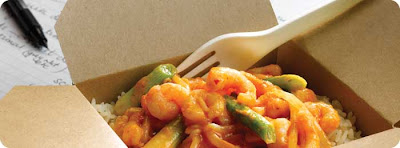Food Suppliers and the Catering Trade - Learning to Manage a Kitchen Order
The catering trade isn't easy to run. It's based on an element of unpredictability, and constantly battles with itself to balance the need to have as much food as its guests want, with the requirement not to order too much.
It takes a while to get used to the routines of food ordering. The novice manager isn't helped by the fact that different owners have different ways of doing things. Some prefer to keep their stocks on the dangerous side of low, stating that they would rather run out of items and take them off the menu until the food suppliers next visit: while others can't abide the idea that a customer could order something from the menu that isn't available anymore.
The two points of view are represented, in one way or another, across the board of catering establishments and hospitality industry locations.
The first point of view is not just financially motivated. It is, of course, true that you can't lose money on food if you are selling more than you order; or, rather, that you can't ever waste money by throwing food away, if you order less than you need. However, there's a second element to this ordering model.
A restaurant or bar that runs out of a popular dish may, within reason, create and reinforce a reputation for itself as a popular place to eat - and for those dishes it runs out of as so popular it cannot keep up with demand. As long as the speed with which a certain dish sells out is not ludicrous, and as long as guests are able to order the majority of dishes on menu for most of the time, then the catering establishment that sometimes drops stock levels creates an atmosphere of exclusivity that is hard to develop in other ways.
At the other end of the spectrum, the second point of view holds that no restaurant or bar should ever find itself in a position where it has to deny a customer the food he or she has chosen from the menu. Again, there's more going on here than at first meets the eye - some subtleties that must be weighed in the accounts before this approach can be seen to bear fruit.
The first and most cautionary note to sound here is that of overstocking. Overstocking on food is the nightmare of every kitchen or establishment manager. If you have to throw away what you ordered, you can't sell it and make a profit - and you can't recoup the original cost of ordering it either.
Every establishment will, at some point, have to throw away food it has ordered. This is the nature of the business and is true even of food that can be frozen. The trick, for the business keen always to have the full menu in operation, is to ensure that wastage happens only very infrequently. In order to make that assurance, it becomes necessary to develop a solid understanding of the patterns that affect the restaurant trade.
Seasonal patterns allow some restaurant managers to work out when they are likely to need their largest and smallest orders - big in July and August, for example, and small in February. There's nothing like hands-on experience to back this up. Judging current trade patterns on top of known seasonal patterns allows the manager to make informed choices.
Eva Holmes is a former catering manager. She now advises food suppliers on their stock management procedures.
It takes a while to get used to the routines of food ordering. The novice manager isn't helped by the fact that different owners have different ways of doing things. Some prefer to keep their stocks on the dangerous side of low, stating that they would rather run out of items and take them off the menu until the food suppliers next visit: while others can't abide the idea that a customer could order something from the menu that isn't available anymore.
The two points of view are represented, in one way or another, across the board of catering establishments and hospitality industry locations.
The first point of view is not just financially motivated. It is, of course, true that you can't lose money on food if you are selling more than you order; or, rather, that you can't ever waste money by throwing food away, if you order less than you need. However, there's a second element to this ordering model.
A restaurant or bar that runs out of a popular dish may, within reason, create and reinforce a reputation for itself as a popular place to eat - and for those dishes it runs out of as so popular it cannot keep up with demand. As long as the speed with which a certain dish sells out is not ludicrous, and as long as guests are able to order the majority of dishes on menu for most of the time, then the catering establishment that sometimes drops stock levels creates an atmosphere of exclusivity that is hard to develop in other ways.
At the other end of the spectrum, the second point of view holds that no restaurant or bar should ever find itself in a position where it has to deny a customer the food he or she has chosen from the menu. Again, there's more going on here than at first meets the eye - some subtleties that must be weighed in the accounts before this approach can be seen to bear fruit.
The first and most cautionary note to sound here is that of overstocking. Overstocking on food is the nightmare of every kitchen or establishment manager. If you have to throw away what you ordered, you can't sell it and make a profit - and you can't recoup the original cost of ordering it either.
Every establishment will, at some point, have to throw away food it has ordered. This is the nature of the business and is true even of food that can be frozen. The trick, for the business keen always to have the full menu in operation, is to ensure that wastage happens only very infrequently. In order to make that assurance, it becomes necessary to develop a solid understanding of the patterns that affect the restaurant trade.
Seasonal patterns allow some restaurant managers to work out when they are likely to need their largest and smallest orders - big in July and August, for example, and small in February. There's nothing like hands-on experience to back this up. Judging current trade patterns on top of known seasonal patterns allows the manager to make informed choices.
Eva Holmes is a former catering manager. She now advises food suppliers on their stock management procedures.




Comments
Post a Comment